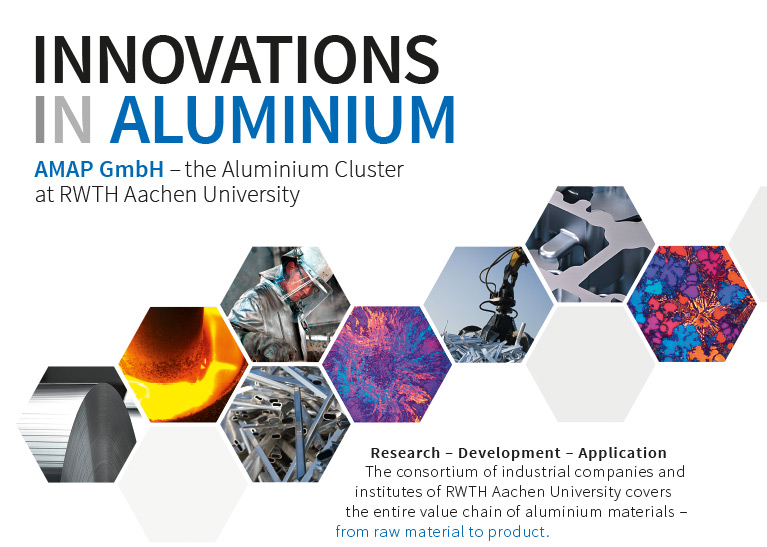Melt Cleanliness
Rolled aluminium products tend to have lower final thicknesses and increasing demands on surface quality. Trends of lightweight cast components also lead to thinner and thinner wall thicknesses and more complex geometries. At the same time mechanical and thermal stresses rise. The increasing demands can only be met through continuous development of materials and highest quality products. Materials, which have a low impurity content compared to contaminated ones and have defect-free and homogeneous surfaces, have significantly better mechanical properties and show even under dynamic loading a longer lifetime and improved fatigue strength. Inclusions such as aluminium carbide Al4C3, alumina Al2O3, titanium boride TiB2, magnesium oxide MgO (fig. 1), and spinel MgAl2O4 are in this regard the most common types of undesirable impurities in aluminium melts.
In the last decades melt cleanliness could be improved through continuous further development of filtration techniques and melt treatments, nevertheless further research is needed regarding the following topics:
- Formation mechanisms of critical inclusions
- Inclusion development from the formation beginning to the final product
- Inclusion quantification in the melt
- Impacts of the inclusions on product properties
To meet the high requirements of the product and material properties it is imperative to characterise the melt in terms of their impurities and assign a defined purity. Accordingly the appropriate melt purification and treatment process parameters have to be derived. Measurement systems are currently available like LiMCA (fig. 2), PoDFA and MetalVision, but these are not very practical, fast, accurate and mostly not reliable for continuous quality control in production. In particular, the needs for experts for measurement recording and interpretation, high investment and operating costs or lack of online detection options (PoDFA) keep companies from deploying this procedure process accompanying. Therefore, the overall scope of the project, planned for three years, is the development of the most suitable measurement device for non-metallic inclusions in aluminium melts. Within the project several approaches regarding the measurement method will be developed and evaluated concerning their suitability in service conditions. Great potential is especially assumed in the ultrasonic technique. Later on, the implementation of the first prototype in the laboratory scale to the production-ready measurement device will take place.
The international project consortium consists of five industry partners: Aleris, Constellium, Hydro, Nemak, and Trimet and two university institutes of RWTH Aachen, the Foundry Institute GI and the Institute of Process Metallurgy and Metal Recycling IME.
Rolled aluminium products tend to have lower final thicknesses and increasing demands on surface quality. Trends of lightweight cast components also lead to thinner and thinner wall thicknesses and more complex geometries. At the same time mechanical and thermal stresses rise. The increasing demands can only be met through continuous development of materials and highest quality products. Materials, which have a low impurity content compared to contaminated ones and have defect-free and homogeneous surfaces, have significantly better mechanical properties and show even under dynamic loading a longer lifetime and improved fatigue strength. Inclusions such as aluminium carbide Al4C3, alumina Al2O3, titanium boride TiB2, magnesium oxide MgO (fig. 1), and spinel MgAl2O4 are in this regard the most common types of undesirable impurities in aluminium melts.
In the last decades melt cleanliness could be improved through continuous further development of filtration techniques and melt treatments, nevertheless further research is needed regarding the following topics:
- Formation mechanisms of critical inclusions
- Inclusion development from the formation beginning to the final product
- Inclusion quantification in the melt
- Impacts of the inclusions on product properties
To meet the high requirements of the product and material properties it is imperative to characterise the melt in terms of their impurities and assign a defined purity. Accordingly the appropriate melt purification and treatment process parameters have to be derived. Measurement systems are currently available like LiMCA (fig. 2), PoDFA and MetalVision, but these are not very practical, fast, accurate and mostly not reliable for continuous quality control in production. In particular, the needs for experts for measurement recording and interpretation, high investment and operating costs or lack of online detection options (PoDFA) keep companies from deploying this procedure process accompanying. Therefore, the overall scope of the project, planned for three years, is the development of the most suitable measurement device for non-metallic inclusions in aluminium melts. Within the project several approaches regarding the measurement method will be developed and evaluated concerning their suitability in service conditions. Great potential is especially assumed in the ultrasonic technique. Later on, the implementation of the first prototype in the laboratory scale to the production-ready measurement device will take place.
The international project consortium consists of five industry partners: Aleris, Constellium, Hydro, Nemak, and Trimet and two university institutes of RWTH Aachen, the Foundry Institute GI and the Institute of Process Metallurgy and Metal Recycling IME.




